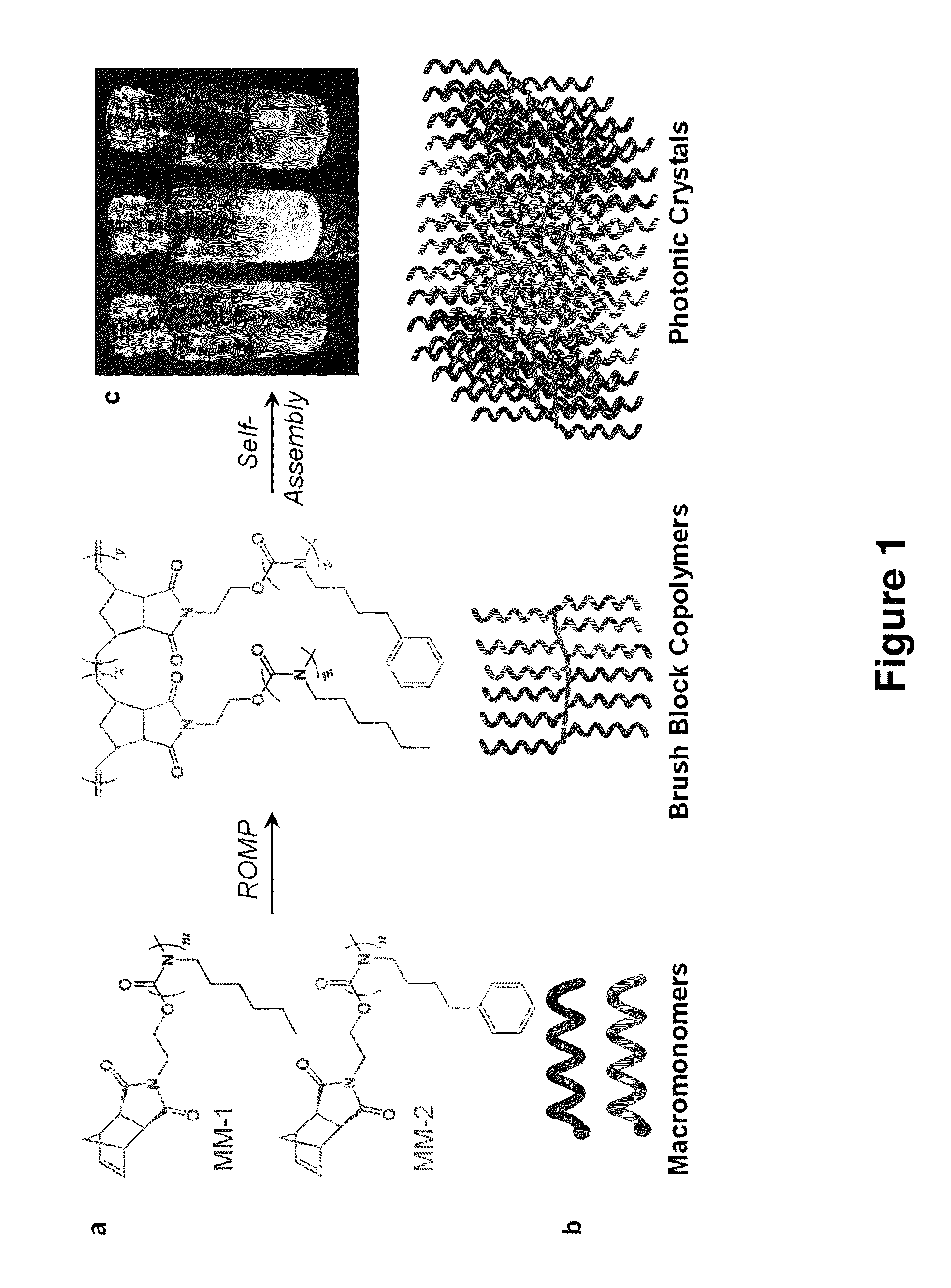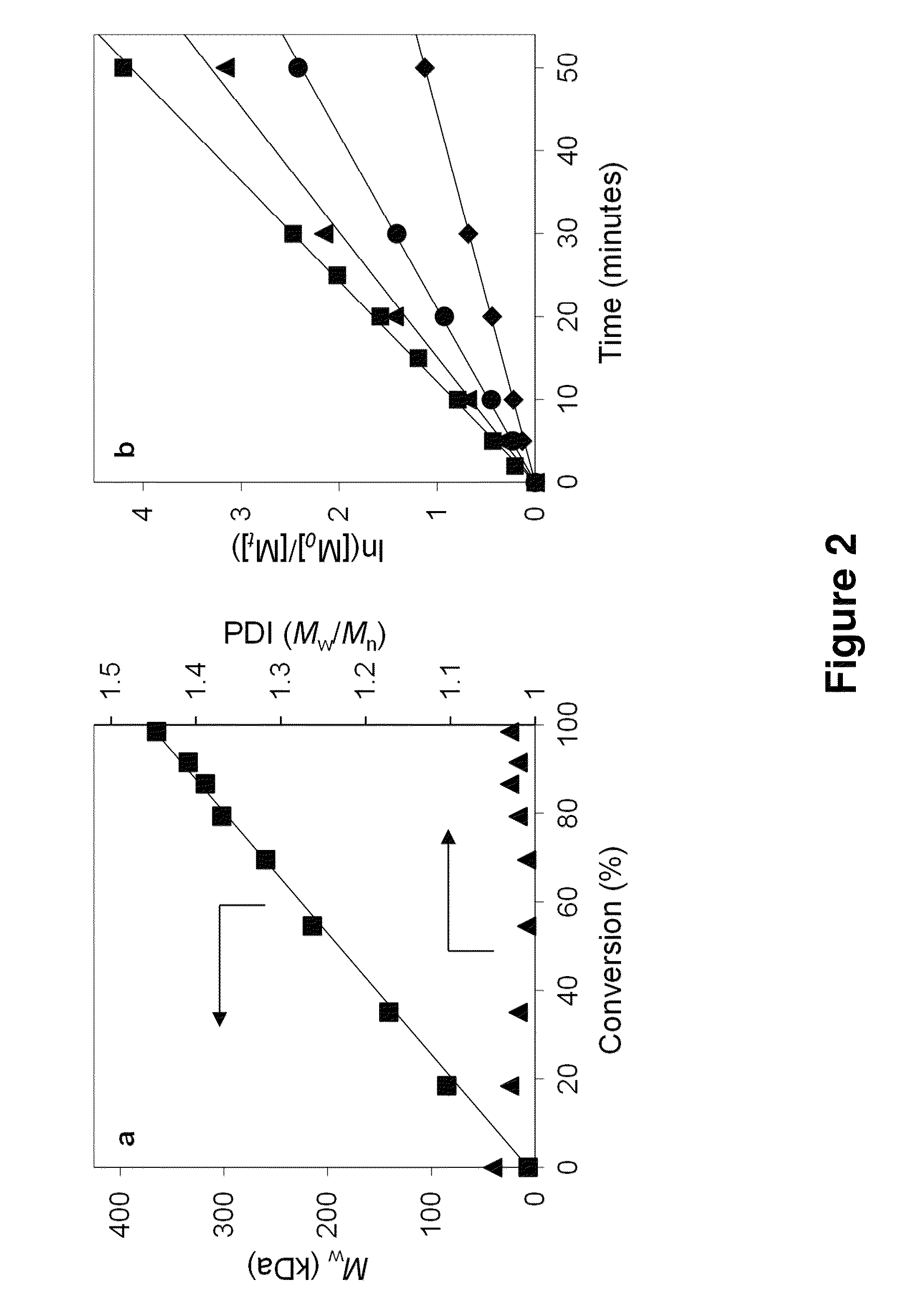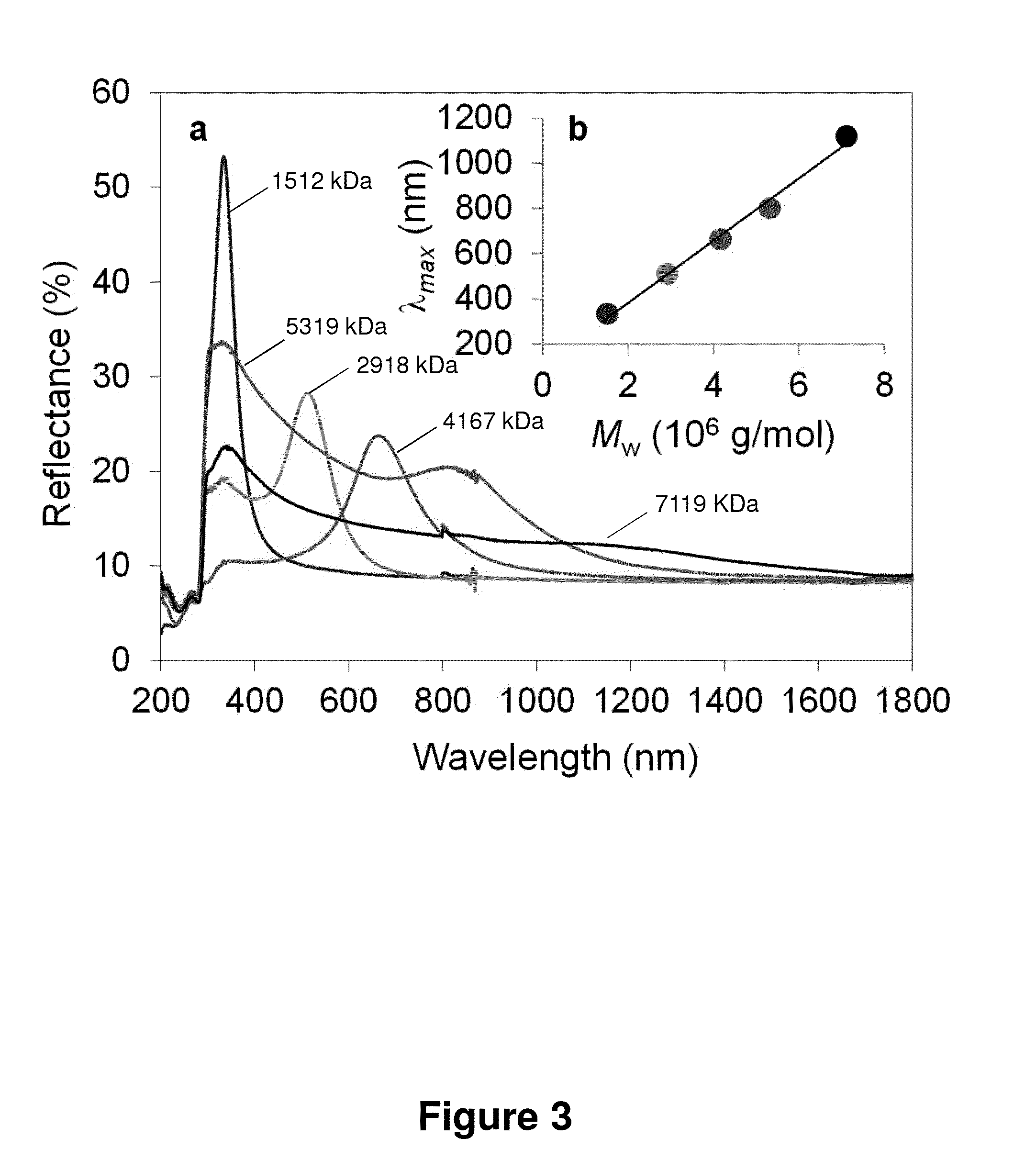Photonic structures from self assembly of brush block copolymers and polymer blends
a technology of brush block and polymer blend, which is applied in the field of photonic structures from self-assembly of brush block copolymers and polymer blends, can solve the problems of inability to effectively eliminate defects, degradation of polymer chains, and limitations in the efficiency of initiation and conversion of monomers, and achieve the effect of complementary compositions
- Summary
- Abstract
- Description
- Claims
- Application Information
AI Technical Summary
Benefits of technology
Problems solved by technology
Method used
Image
Examples
example 1
Synthesis of Isocyanate-Based Brush Block Copolymers and their Rapid Self-Assembly to Infrared Reflecting Photonic Crystals
Abstract
[0140]The synthesis of rigid-rod, helical isocyanate-based macromonomers was achieved through the polymerization of hexyl isocyanate and 4-phenylbutyl isocyanate, initiated by an exo-norbornene functionalized half-titanocene complex. Sequential ruthenium-mediated ring-opening metathesis polymerization of these macromonomers readily afforded well-defined brush block copolymers, with precisely tunable molecular weights ranging from high (1512 kDa) to ultra-high (7119 kDa), while maintaining narrow molecular weight distributions (PDI=1.08-1.39). The self-assembly of these brush block copolymers to solid-state thin-films and their photonic properties were investigated. Due to the rigid architecture of these novel polymeric materials, they rapidly self-assemble through simple controlled evaporation to photonic crystal materials that reflect light from the UV,...
example 2
Precisely Tunable Photonic Crystals From Rapidly Self-Assembling Brush Block Copolymer Blends
[0204]Block copolymers (BCPs) are ideal large area photonic band gap materials because of their low cost potential in terms of both raw material and “bottom-up” fabrication via self-assembly.[1] The microphase segregation of chemically distinct polymer blocks[2] to materials possessing a periodic dielectric function can form a photonic band gap that forbids the propagation of certain wavelengths of light through the bulk. Such materials are termed photonic crystals (PCs) and have many applications as optical filters, mirrors, and cavities.[3] In the simplest scenario, 1-D PCs are constructed from alternating layers of materials, where the reflected wavelength is determined by the thickness and refractive index of each layer. Unfortunately, chain-entanglement, a definitive polymer characteristic, most often restricts the ability of ultra-high molecular weight (MW) BCPs to self-assemble to ord...
example 3
Blending of Different Molecular Weight Polymers
[0228]We report fabrication of photonic crystals by brush block-copolymer (BCPs) blending. By incrementally changing the ratio between two components in the blend we were able to access photonic crystals that reflected across the spectrum, anywhere from UV into near IR. A similar strategy was pursued using on dendronized block-copolymers, where macromolecular pendant chain was replaced with Newkome-type dendritic group, functionalized with either benzyl ether group or long aliphatic chain.
[0229]FIG. 9 provides structure of wedge-type block copolymers and FIG. 12 provides structures of brush block copolymer, linear polystyrene, and polynorbornene-graft-polystyrene.
[0230]According to the earlier reported data on certain linear symmetrical BCPs a blend will maintain stacked lamellae morphology as long as the ratio between molecular weight of two components is less than 5. Thus for our study we chose two dendronized BCPs samples with Mw: 48...
PUM
| Property | Measurement | Unit |
|---|---|---|
| molecular weight | aaaaa | aaaaa |
| molecular weight | aaaaa | aaaaa |
| polydispersity index | aaaaa | aaaaa |
Abstract
Description
Claims
Application Information
 Login to View More
Login to View More - R&D
- Intellectual Property
- Life Sciences
- Materials
- Tech Scout
- Unparalleled Data Quality
- Higher Quality Content
- 60% Fewer Hallucinations
Browse by: Latest US Patents, China's latest patents, Technical Efficacy Thesaurus, Application Domain, Technology Topic, Popular Technical Reports.
© 2025 PatSnap. All rights reserved.Legal|Privacy policy|Modern Slavery Act Transparency Statement|Sitemap|About US| Contact US: help@patsnap.com



